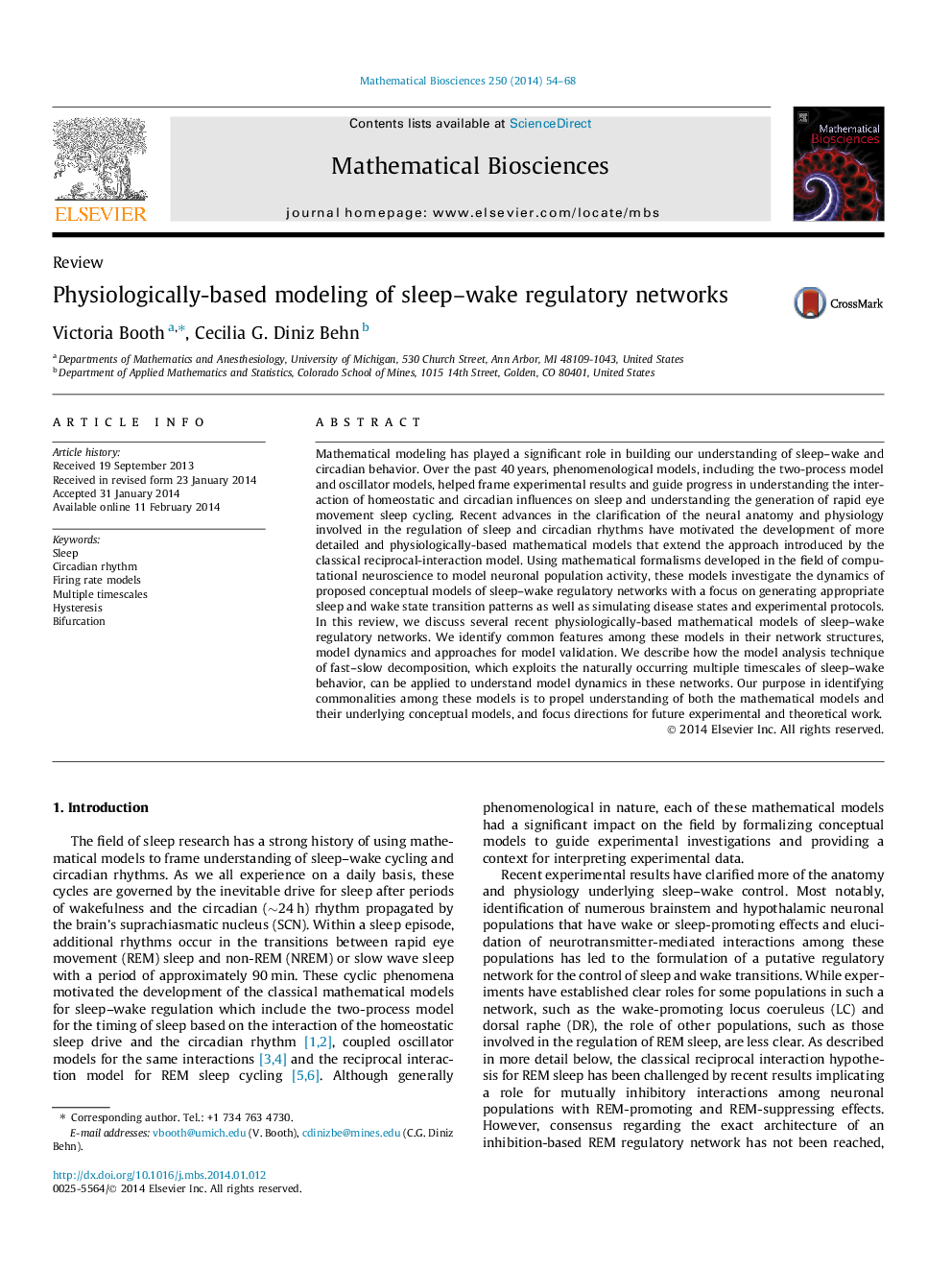| کد مقاله | کد نشریه | سال انتشار | مقاله انگلیسی | نسخه تمام متن |
|---|---|---|---|---|
| 4500050 | 1624030 | 2014 | 15 صفحه PDF | دانلود رایگان |
• Competing sleep–wake regulatory network models share some basic network structures.
• Their different model formalisms can generate similar model dynamics.
• In most models, sleep–wake transitions are governed by a hysteresis loop.
• These recent models can play an important role in sleep and circadian research.
Mathematical modeling has played a significant role in building our understanding of sleep–wake and circadian behavior. Over the past 40 years, phenomenological models, including the two-process model and oscillator models, helped frame experimental results and guide progress in understanding the interaction of homeostatic and circadian influences on sleep and understanding the generation of rapid eye movement sleep cycling. Recent advances in the clarification of the neural anatomy and physiology involved in the regulation of sleep and circadian rhythms have motivated the development of more detailed and physiologically-based mathematical models that extend the approach introduced by the classical reciprocal-interaction model. Using mathematical formalisms developed in the field of computational neuroscience to model neuronal population activity, these models investigate the dynamics of proposed conceptual models of sleep–wake regulatory networks with a focus on generating appropriate sleep and wake state transition patterns as well as simulating disease states and experimental protocols. In this review, we discuss several recent physiologically-based mathematical models of sleep–wake regulatory networks. We identify common features among these models in their network structures, model dynamics and approaches for model validation. We describe how the model analysis technique of fast–slow decomposition, which exploits the naturally occurring multiple timescales of sleep–wake behavior, can be applied to understand model dynamics in these networks. Our purpose in identifying commonalities among these models is to propel understanding of both the mathematical models and their underlying conceptual models, and focus directions for future experimental and theoretical work.
Journal: Mathematical Biosciences - Volume 250, April 2014, Pages 54–68
